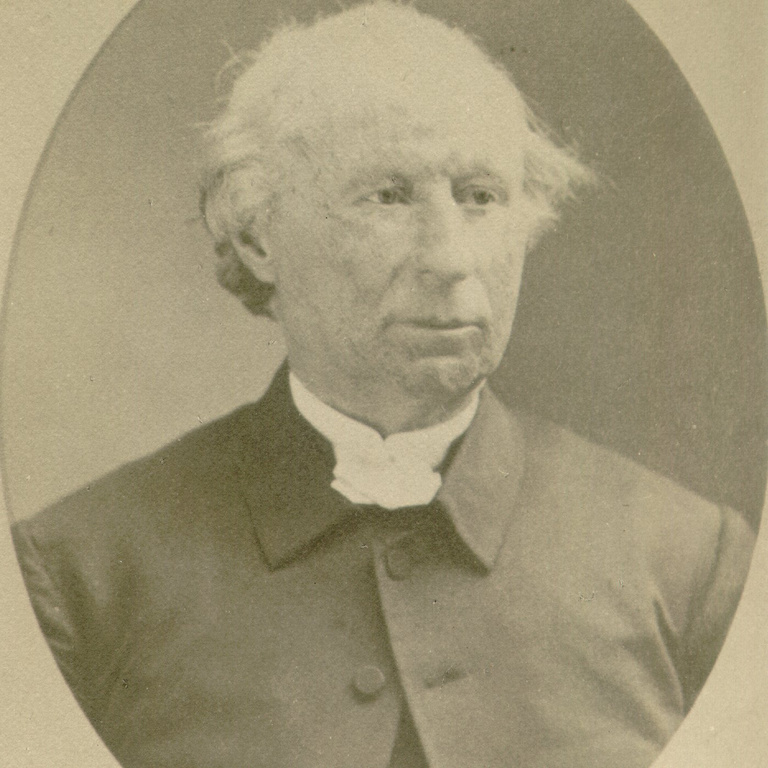(Editor’s note: The Old Gold series provides a look at University of Iowa history and tradition through materials housed in University Archives, Department of Special Collections.)
When the Panic of 1857 struck the U.S., the State University of Iowa (SUI)—as our campus was known at the time—was barely a decade old. Classes had begun only two years before. The financial panic that swept the country struck the state’s coffers and, consequently, SUI.
By any measure, the young institution was off to an inauspicious start. Though established by the state’s lawmakers in 1847, less than three months after Iowa statehood, the university was not funded immediately. Instead, to establish itself, the institution sold parcels of land to raise funds, a process that consumed much of the university trustees’ time during their first eight years. In 1855 the doors at last opened for classes, though the earliest enrollment count doesn’t appear in records in the University Archives. The earliest count reflects the 1856–57 school year, when 124 were reported registered.
By spring 1858, unfortunately, the state’s treasury designated for the university had been depleted, with the Panic of 1857 and resulting bank failures largely to blame. According to the May 5, 1858, Iowa City Weekly Republican, the Board of Trustees decided to suspend operations of the school for the 1858–59 academic year. Despite the difficult vote, the trustees also expressed hope that the temporary closure would allow the fledgling institution time to build up its financial reserves. According to an unsigned editorial:
“It is hoped the university will, in time, meet fully all of the expectations that may have been found in relation to it. In view of such contemplated results, the friends of education throughout the state have abundant cause for congratulation and hope.”

While hope was abundant, the necessary funds to resume operation of the school did not materialize until the autumn of 1859, nearly one and a half years later. On Oct. 26, the trustees voted to reopen the campus on Sept. 1, 1860, feeling confident that the state’s finances were once again safe and secure. The board also selected Silas Totten as the institution’s second president. (See Old Gold, September 2012.) That fall 1860 enrollment numbered 173, a 40 percent increase from the 1856–57 level prior to closing. At last, the state’s university was on firmer ground.
Old Gold believes in the English phrase, “Good things come to those who wait.” Fortunately for the State University of Iowa, the waiting during the difficult times of 1858–60 resulted ultimately in good.